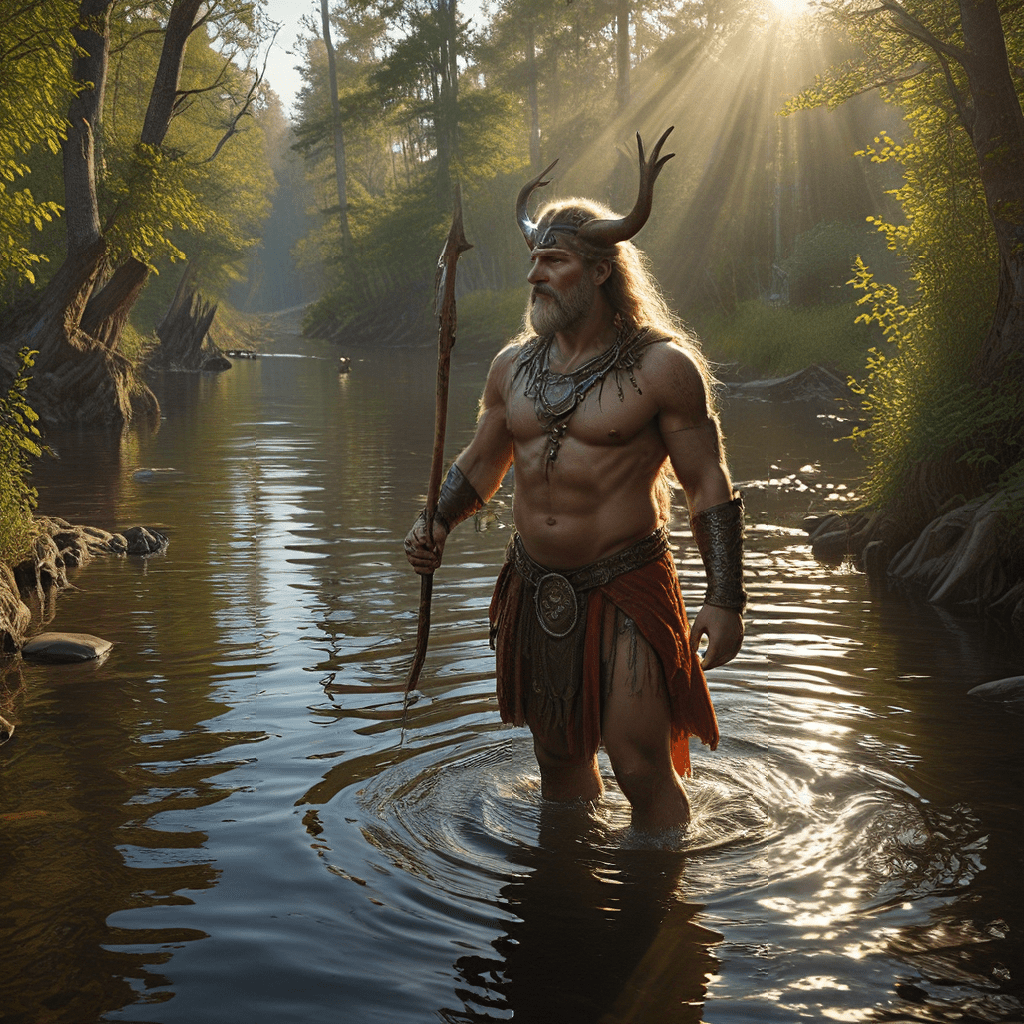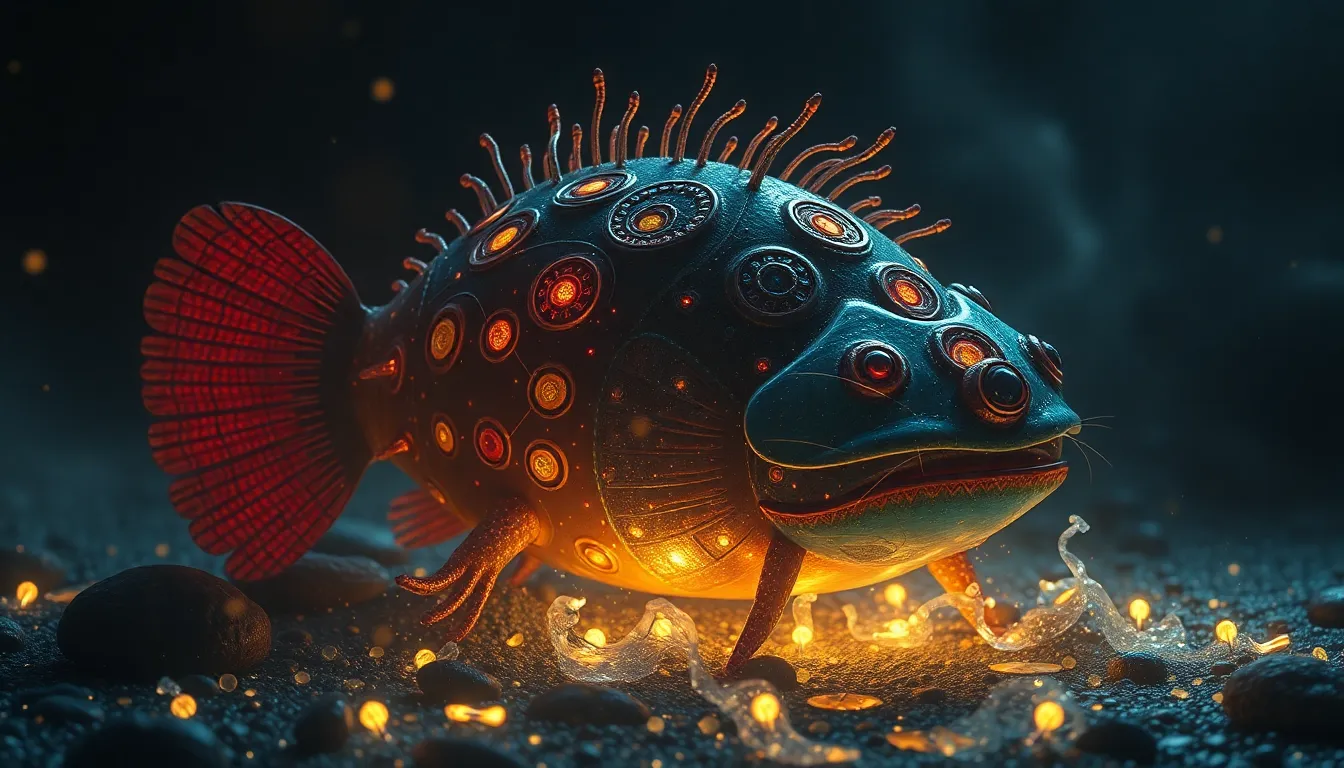Baltic Mythology: A Tapestry of Ancient Beliefs
Baltic mythology, a vibrant tapestry of ancient beliefs and traditions, offers a fascinating glimpse into the worldview of the ancient peoples who inhabited the Baltic region. This unique mythology, rooted in the natural world and the forces that shape human destiny, played a vital role in shaping the cultural landscape of Lithuania, Latvia, and Estonia. Before the arrival of Christianity, Baltic people worshipped a rich pantheon of deities and believed in a complex system of rituals and festivals that reflected their deep connection to the natural world. Baltic mythology, a rich and complex system of beliefs and stories, reveals much about the worldview of the people who inhabited the Baltic region. It was a living mythology, deeply intertwined with everyday life, and played a vital role in shaping their understanding of the world, their place within it, and their relationship with the divine.
Origins and Development of Baltic Mythology
The origins of Baltic mythology trace back to the Proto-Baltic language, a common ancestor of the modern Baltic languages, which emerged around 2000 BCE. As the Proto-Baltic people spread across the Baltic region, their mythology evolved, absorbing influences from neighboring cultures. These influences included the Indo-European mythology shared by other groups who migrated from the Pontic-Caspian Steppe, as well as the cultures of the Finnic and Slavic peoples who inhabited regions bordering the Baltic Sea. Baltic mythology emerged from a complex blend of these influences, creating a distinctive tapestry of beliefs and traditions that reflected the unique environment and cultural experiences of the Baltic people.
Key Deities and Their Roles
Baltic mythology featured a pantheon of deities, each representing a different aspect of the natural world and human existence. Among the most prominent deities was Perkūnas, the thunder god, who was responsible for storms, lightning, and the power of the sky. He was a powerful and often feared deity, seen as a protector of the people and a bringer of justice. Dievs, the sky god, was another important figure in Baltic mythology. He was seen as the creator of the world and the ultimate ruler of the cosmos. Dievs was often invoked for protection and guidance, and his power was believed to permeate all aspects of life.
The World Tree and the Cosmos
The World Tree, known as the "Oak of the World," played a central role in Baltic mythology. This colossal tree, its roots reaching deep into the underworld and its branches stretching to the heavens, represented the connection between the earthly realm and the divine. It was a sacred symbol of life, growth, and the cyclical nature of the cosmos. The World Tree served as the axis mundi, the central point of the universe, and it played a vital role in many creation myths and cosmologies. The World Tree symbolized the interconnectedness of all things, from the smallest creature to the mightiest god, and served as a reminder of the delicate balance of the cosmos.
Mythological Creatures and Their Significance
Baltic mythology featured a diverse array of mythical creatures, each carrying its own unique symbolism and significance. The Laumė, a benevolent spirit associated with the home and family, was believed to bring good luck and protect the household. The Velnias, a malevolent figure often depicted as a devilish creature, represented chaos, darkness, and temptation. Other creatures like the Jūratė, the sea goddess, and the Ragana, the witch, served as powerful reminders of the forces of nature and the dangers that lurked beyond the realm of human understanding. The presence of these creatures, with their distinct characteristics and roles, enriched the narrative tapestry of Baltic mythology and offered a glimpse into the beliefs and anxieties of the Baltic people.
Rituals and Festivals: Connecting with the Divine
Baltic people believed in a deep connection with the natural world and the divine. This connection manifested itself through a complex system of rituals and festivals that marked the passage of time, celebrated natural cycles, and sought to appease the deities and ensure their favor. These rituals were integral to the agricultural cycle, and many were designed to ensure good harvests and protect the community from harm.
One of the most important festivals was the celebration of the winter solstice. This festival, known as "Kūčios" in Lithuania and "Ziemasvētki" in Latvia, marked the shortest day of the year and symbolized the return of light and the promise of a new beginning. It was a time of feasting, storytelling, and family gatherings, with traditions like placing a lit candle or torch in the window to guide spirits and ensure a bountiful harvest in the upcoming year.
Important agricultural rituals, such as the "Jāņi" (Midsummer) festival, were also deeply embedded in Baltic tradition. This festival, usually celebrated on the night of June 23rd, honored the sun god and celebrated the beginning of the harvest season. It involved bonfires, dancing, and symbolic actions like weaving wreaths from wildflowers, symbolizing the power of nature and the cycle of life. The "Jāņi" festival was a time for community, celebration, and connection with the natural world, reflecting the close relationship between the Baltic people and the land that sustained them.
Impact of Christianity on Baltic Mythology
The arrival of Christianity in the Baltic region, beginning in the 13th century, had a profound impact on Baltic mythology. Christian missionaries often saw pagan beliefs as heretical and fought to eradicate them. As a result, many traditional rituals were outlawed, and pagan temples were destroyed. This led to a gradual suppression of Baltic mythology and a shift towards Christian beliefs and practices.
However, the influence of Baltic mythology persisted even after the adoption of Christianity. Some pagan beliefs and practices were incorporated into Christian traditions, creating hybrid forms of religious expression. It's believed that elements of Baltic mythology, like the concept of the World Tree, found their way into Christian folklore. This fusion resulted in the survival of certain aspects of Baltic mythology, although often in a modified or reinterpreted form.
Themes of Nature, Fate, and Destiny
Nature played a central role in Baltic mythology. The Baltic people saw the world as a living, dynamic entity, with deities and spirits inhabiting every aspect of nature. From the forests, rivers, and mountains to the animals, plants, and even the weather, nature was a source of both beauty and danger. This reverence for nature was reflected in many of their rituals, festivals, and beliefs.
The concept of fate was also deeply woven into Baltic mythology. The Baltic people believed that their lives were predetermined by a higher power, and that their destinies were influenced by the gods. This belief led to a strong sense of respect for the order of the universe and a deep awareness of the limitations of human control. It also gave rise to a strong belief in the power of fate and the importance of living in harmony with the natural world.
Connections to Other Indo-European Mythologies
Baltic mythology shares significant similarities with other Indo-European mythologies, such as those of the Greeks, Romans, and Slavs. These connections indicate a common origin and a shared cultural heritage. The belief in a pantheon of gods, including a sky god, a thunder god, and a sun god, is a common thread found in many Indo-European mythologies.
Many mythical creatures also have counterparts across different Indo-European traditions. For example, the Lithuanian "Laumė" (house spirit) shares similarities with the Slavic "Domovoy" (house spirit), suggesting a shared belief in protective spirits inhabiting the home. These similarities highlight the interconnectedness of ancient Indo-European cultures and the enduring influence of shared traditions.
Theories on the Survival of Baltic Pagan Traditions
While Baltic mythology faced suppression after the arrival of Christianity, it never fully disappeared. Folklore, songs, and stories preserved aspects of pagan traditions. Folklore, a vital repository of cultural memory, played a crucial role in the survival of Baltic mythology. It's believed that many aspects of Baltic mythology continued to live on in the form of oral traditions, passed down through generations.
In recent decades, there has been a growing interest in reviving Baltic pagan traditions. New Age movements and modern pagan communities have drawn inspiration from Baltic mythology, incorporating its beliefs and practices into their own spiritual paths. This revival of interest has helped to bring renewed attention to the rich and complex tapestry of Baltic mythology and its lasting influence on the cultural identity of the Baltic region.
FAQ
Q: What are some key differences between Baltic mythology and other Indo-European mythologies?
A: While Baltic mythology shares similarities with other Indo-European mythologies, it also exhibits unique characteristics. One key difference is the strong emphasis on nature and the celebration of its cycles. Baltic mythology also features a different set of deities, with less emphasis on the concept of an Olympian pantheon.
Q: What is the role of the World Tree in Baltic mythology?
A: The World Tree, known as the “Oak of the World,” is a central symbol in Baltic mythology. It represents the connection between the earthly realm, the heavens, and the underworld. It signifies the interconnectedness of all things and is also associated with life, growth, and the cyclical nature of the cosmos.
Q: How has the impact of Christianity influenced the survival of Baltic mythology?
A: The arrival of Christianity led to the suppression of Baltic mythology. Many pagan traditions were outlawed, and Christian beliefs and practices became dominant. However, Baltic mythology has endured in folklore, songs, stories, and incorporated aspects in Christian traditions.
Q: What is the significance of the "Jāņi" festival in Baltic culture?
A: The "Jāņi" festival, celebrating the summer solstice, is one of the most important festivals in Baltic culture. It honors the sun god and celebrates the beginning of the harvest season. It is a time of community, celebration, and connection with the natural world, reflecting the close relationship between the Baltic people and the land that sustains them.



